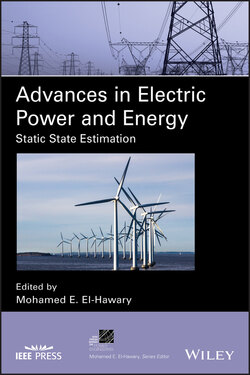Читать книгу Advances in Electric Power and Energy - Группа авторов - Страница 48
2.5 ALTERNATIVE STATE ESTIMATORS
ОглавлениеThe most common state estimation method within electric energy systems is WLS technique. This well‐known procedure was first developed by Schweppe et al. [4–6] in the 1970s and was formulated as an optimization problem.
State of the art of current available nonlinear optimization solvers, recent advances in computational speed, and emerging multi‐core Hyper‐Threading Technology (HTT) processors allow the estimation problem to be solved directly [15]. Two main advantages can be led by proceeding in this manner: (i) alternative estimators (such as least absolute value, quadratic‐constant, or least median of squares, among others) can be easily used, and (ii) decomposition techniques can be applied, resulting in decentralized estimators.
Bearing in mind that recent progress in nonlinear and mixed integer nonlinear optimization techniques, the aims of this chapter are (i) to formulate the most common state estimation algorithms as mathematical programming problems and (ii) to compare them from the numerical and computational perspectives.
From the optimization perspective, the following sections provide formulations as mathematical programming problems for the most common state estimation procedures, comparing them from both the numerical and computational perspectives.
For the sake of generality, the general mathematical programming formulation of most state estimators can be expressed as
(2.29a)
subject to
(2.29b)
(2.29c)
The actual expression of the scalar function J(x) depends on the estimator employed. It can generally be expressed as a function of vector y(x) defined as
(2.30)
